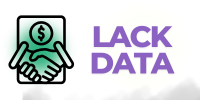Your AdWords Performance The advantage of Google Analytics is that it’s much less limited than AdWords: you can go up to 20 dimensions, with custom metrics.
For dimensions, you have, for example, the type of customer (occasional, cardholder, etc.), family status, point of sale (physical, online, etc.). And you can cross-reference these with metrics such as the number of purchases, behavior, offline revenue, etc.
With Google Analytics, you can create highly personalized audiences. This requires a certain amount of data and visitors.
Bonus Google Your AdWords Performance Analytics: to go further
Jonathan advises us to first focus on audience bidding by demographics (age, gender). This is the bare minimum. Then, use visitors based on what they visited, whether at the top or bottom of the conversion funnel.
But there’s something missing: lifetime value . Many customers want the acquisition cost to be lower than the margin on the first order. Indeed, for some products, each order must be profitable. This is particularly the case for large country email list orders, such as cars or verandas. But for cosmetics, for example, this isn’t as necessary. You can make money after two or three orders; this is called lifetime value.
Google has created a script for this. But for it to be effective, you need at least 1,000 orders per week. Google will then give you three levels of information. It will group your customers equally according to:
The recency of the last purchase;
- Frequency of purchases;
- The value of the basket (average).
Then, for each combination, Google will find the Average Past Income.
Finally, he can deduce the relative value for each combination by dividing their average income by the basic average income.
With this, Google will create dozens of what content are you most interested in producing in the coming weeks automated audience lists for you, which will be sent to Google Analytics and then exported back into the AdWords interface. Then, it’s up to you to decide whether you want to retarget these visitors further or not.
Jonathan concludes this fascinating talk
with a few words about auction management. He recommends the Smart Bidding tool, which wasn’t very good a few years ago, but was significantly improved in 2016. He takes all the insights we’ve discussed and offers four strategies:
- Revenue (targeted based on return on ad spend): Target ROAS. This is the strategy Jonathan uses most for his e-commerce clients;
- Conversions/sales: you give a target CPA (this is very useful for forms);
- Maximize for clicks;
- Visibility (being at the top of the screen, or being present in front of my competitor).
Jonathan recommends using clean email the first two in particular.
If you missed Jonathan’s webinar, feel free to watch the replay and share your thoughts in the comments.
